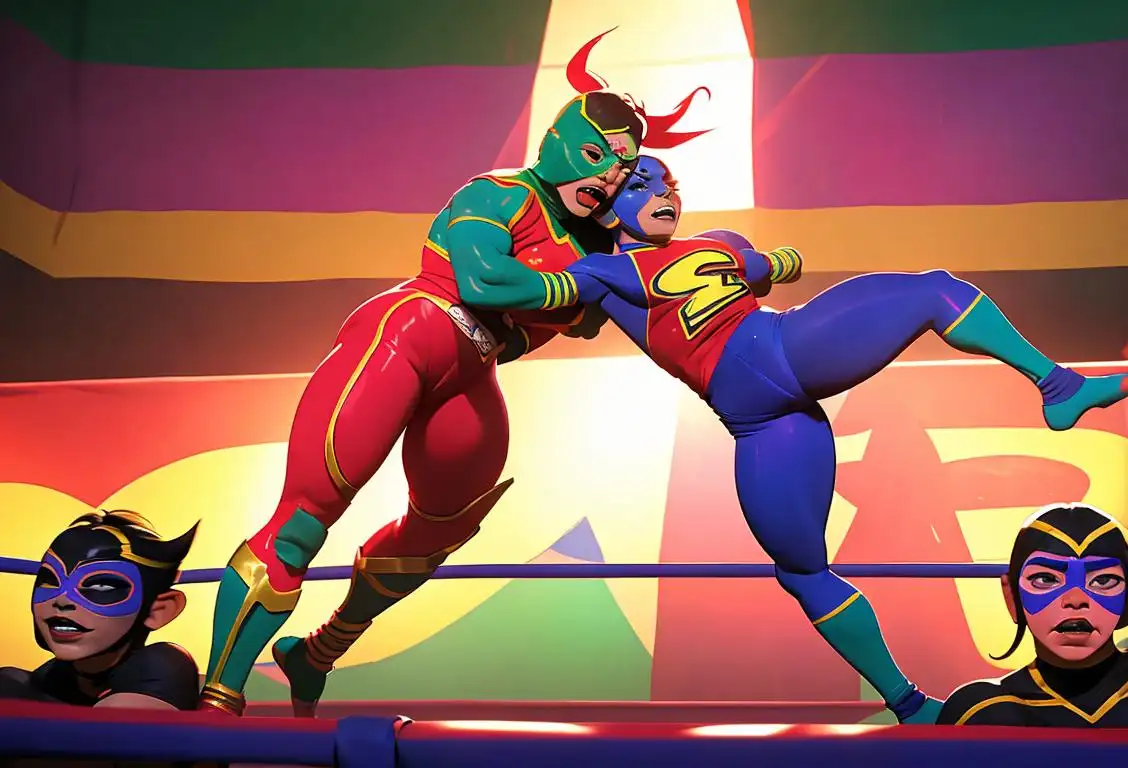National Lucha Libre Day

Welcome to the exciting world of lucha libre, where spandex-clad superheroes throw down in the ring with dazzling acrobatics! Get ready to dive into the gripping history of National Lucha Libre Day and discover why this wild and wacky sport holds a special place in the hearts of fans around the world.
When is Lucha Libre Day?
It's national lucha libre day on the 22nd September.
A Brief History of Lucha Libre
Lucha libre, meaning 'freestyle wrestling' in Spanish, originated in Mexico in the early 20th century. With its colorful masks, high-flying maneuvers, and larger-than-life characters, lucha libre quickly captured the imaginations of audiences both young and old.
The sport's popularity soared, and it soon became an integral part of Mexican culture. Wrestlers, known as luchadors, became celebrities, each developing a unique persona and adopting a masked identity to maintain an element of mystery.
On National Lucha Libre Day, we celebrate the rich heritage of this beloved sport and all the incredible performers who have graced the ring over the years. It's a day to embrace the excitement, the drama, and the awe-inspiring athleticism that lucha libre embodies.
History behind the term 'Lucha Libre'
1863
The birth of lucha libre
Lucha libre, meaning 'free wrestling' in Spanish, originated in Mexico during the mid-19th century as a form of professional wrestling. It was heavily influenced by traditional Mexican wrestling styles, indigenous fighting techniques, and European wrestling styles that were introduced by traveling circus shows. The earliest known lucha libre event took place in 1863, making it one of the oldest forms of professional wrestling in the world.
1933
The introduction of colorful masks
In 1933, a wrestler named El Santo emerged and forever changed the face of lucha libre. El Santo began wearing a silver mask during his matches, not only to protect his identity but also to create a captivating persona. This marked the start of a tradition where luchadores (wrestlers) would wear vibrant and elaborate masks, distinguishing themselves from their opponents and creating a visual spectacle for the audience.
1952
The rise of El Santo
The year 1952 witnessed the meteoric rise of El Santo, who went on to become the most iconic and influential luchador of all time. El Santo's fame extended beyond the wrestling ring, starring in numerous movies where he fought against monsters, evil scientists, and supernatural creatures. His mask became an iconic symbol of Mexican popular culture and led to the widespread popularity of lucha libre in the country.
1960s
The Golden Age of lucha libre
The 1960s marked the Golden Age of lucha libre, with a surge in popularity and the emergence of legendary wrestlers. This era saw the rise of popular luchadores such as Blue Demon, Mil Máscaras, and El Solitario. Lucha libre became a staple of Mexican television, captivating audiences with its high-flying acrobatics, colorful characters, and dramatic storylines that often pitted technicos (good guys) against rudos (heels). The combination of athleticism and theatricality solidified lucha libre as a cultural phenomenon in Mexico.
1991
The formation of Consejo Mundial de Lucha Libre (CMLL)
In 1991, the oldest and one of the most prestigious lucha libre promotions, Consejo Mundial de Lucha Libre (CMLL), was formed. CMLL continues to showcase top-tier luchadores and holds major events, such as the annual Homenaje a Dos Leyendas and the Grand Prix Internacional. With its rich history and tradition, CMLL has played a significant role in preserving and promoting the art of lucha libre both in Mexico and globally.
Did you know?
Did you know that lucha libre masks are sometimes passed down from one generation of wrestlers to the next? It's a symbol of respect and a way of acknowledging the legacy of those who came before.Tagged
awareness fun sportsFirst identified
21st September 2016Most mentioned on
22nd September 2018Total mentions
396Other days
Wing Day
Left Handers Day
Golf Day
Fitness Day
Foundation Day
Cancer Survivors Day
Dance Day
Memorial Day
Gymnastics Day
Student Athlete Day









